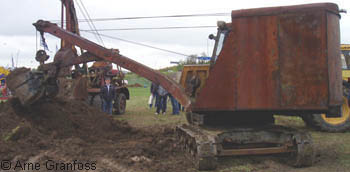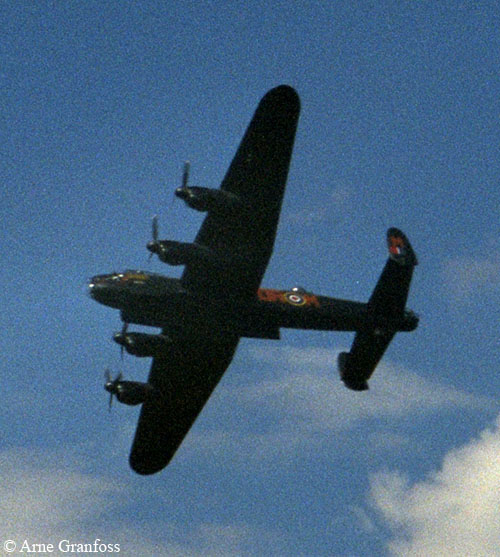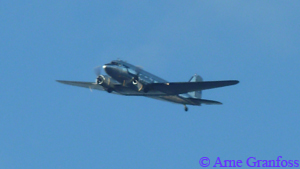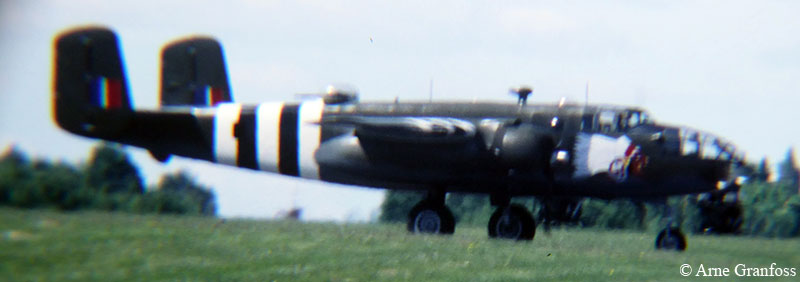British and allied soldiers in Sweden

 UNDER CONSTRUCTION Version 0.41
UNDER CONSTRUCTION Version 0.41
|
Sweden in World War II - across borders
|
 |
![]()
On this page I focus on soldiers who came to Sweden more or less unwillingly, in contrast to 'normal' refugees whose purpose was to escape to Sweden.
![]()
The first foreign soldiers in Sweden during WWII were probably 200 Polish sailors, the crew of the Polish naval school ship Dar Pomorza - a full-rigged sailing ship. Dar Pomorza was in Stockholm on 1 September 1939. The crew were within short sent with various Polish merchant ships to Britain. [s59]
One early group of foreign soldiers in Swedish territory did not stay so long before they continued to Britain. The Polish submarine Wilk was on an escape route on the evening of 14 September 1939, and followed on the surface close behind a Swedish coastal convoy. So they sailed when they met two German destroyers, who apparently thought it was a Swedish submarine. When they came to Kattegatt they left Sweden for Britain. [s59]
![]()
The Haag convention states that neutral countries shall detain soldiers from warfaring countries who enter the neutral nations territory, under guard and as far from the war scene as possible. Folke Bernadotte was ordered to make the arrangements. [s49]
Sweden opened the Främby camp near Falun shortly after the German attack on Denmark and Norway. It could house around 500 men, and was initially guarded by 20 soldiers. [s49]
During the battle in northern Norway in May-June 1940, 244 British soldiers and some members of the French Foreign Legion came to Sweden. They were interned until July-August 1940, when most of them went to Britain. [s77]
Soviet Union soldiers came into Sweden during the battle in northern Finland in 1941, and were interned until October 1944. Most of them returned to the Soviet Union. [s77]
In late July 1943 there were around 50 men in Främby - British RAF crews, French Foreign Legion soldiers and Polish submariners. [s49]
Over time the size of the guard was decreased, and the internees were allowed to move around more and more free in the area. From the summer of 1944 there were not many restrictions. [s49]
![]()
![]()
![]()
The British Special Operations Executive (SOE) had radio communication with London from Gothenburg. [s48]
The USA intelligence Office of Strategic Services (OSS) established commando units from the end of 1942, among others the OSS Norwegian Special Operations Group (NORSO). The unit consisted of among others many Norwegian-Americans and some Swedish-Americans. A part of the unit was sent to Norway in March 1945 for sabotage operations. They passed the border to Sweden at several occasions. [s50]
![]()
On 24 July 1943 "Georgia Rebel" landed in Sweden, the first war plane from the USA that made an emergency landing in Sweden. The B-17 had been damaged during an air raid on factories on Herrøya in Norway. [s49]
One USAAF bomber that was hit by anti-aircraft over Hamburg in mid January 1945 headed north to Sweden. Sweden had appointed 5 airfields where the USAAF pilots were permitted to land. To land in Sweden was not so positive for the Allies, since planes and crews that landed in Sweden were detained, but it was better than a crashlanding over the sea or landing in German-controlled areas. [s49]
The permission to land on the five airfields was not documented in any kind of agreement, and no maps or similar was given to the USA. [s49]
![]()
 The "Georgia Rebel" crew arrived at the Främby camp near Falun on 26 July 1943, the first soldiers from the USA. [s49]
The "Georgia Rebel" crew arrived at the Främby camp near Falun on 26 July 1943, the first soldiers from the USA. [s49]
After some time it was obvious that there were differences between the soldiers from the USA and from the other countries. They were well paid compared to the others - a corporal had a higher salary than a Swedish wing commander. The Poles had to get a job to get some extra money. On 1 October they were moved from the camp. The Poles had to stay in the camp until the end of WWII. [s49]
British and USA plane crews were then housed in hotels and pensions in and near Falun. As more and more emergency landings took place, more and more places around Sweden were used. [s49]
129 heavy bombers landed in Sweden, and 1 200 American soldiers were kept in Swedish detention camps in Falun, Gränna and Västerås until the end of the war. However they could live in a free way, with visits to restaurants and in the neighbourhoods. A few airmen were moved to Stockholm for work at the USA embassy. [s06]
The USA crews found out that many Swedes were positive to and familiar with the USA, and several Swedes had relatives there - foremost in Minnesota. They were also popular among young Swedish girls who were used among others to pay for their own cinema tickets, and suddenly were treated by young airmen who had lots of money. A hotel in Karlstad had an advertisement in the local newspaper: "Dance tonight with participation of American airmen" (my translation). A comment in a letter from one crew member: "Boy, if you ever have to be interned ... THIS IS THE PLACE!" [s49]
The Boeing B-17 "Shoo Shoo Shoo Baby" landed in Sweden with only two working engines. It was bought by Sweden for 1 US dollar, and after the war used by the aviation company ABA in the first Swedish trans-atlantic traffic. At the end of the 1980s it was flown to the USA, to rest at the US Air Force Museum in Dayton. [s82]
![]()
There were more sad stories too. A British bomber crashed into a mountain in the north of Sweden, at 1800 metres height. One person survived and managed to reach nearby town Kvikkjokk, but there was no rescue operation. The plane and remnants were found in 1981.
![]()
![]()
In March 1944 the USA colonel Berndt Balchen came to Sweden to arrange a new courier line, the Sonnie project, between Britain and Sweden. The prime task was to transport people and material that did not fit in the ordinary courier traffic. [s49]
The Air Transport Command (ATC) operated outside the USA legation in Stockholm, as the commercial company AATS who rented three three-storey buildings at the Bromma airport in Stockholm for its up to 250 men. [s49]
 The first plane from Britain landed on Bromma in the morning of 31 March 1944, and the following day the Torslanda airfield in Göteborg was inspected. On 6 April the first real flight took place, with a group of (former) interned Norwegians who wanted to join the Norwegian armed forces in Britain. Three weeks later the first group of USA airmen was flown out of Sweden, airmen who had been forced to land in Denmark but were helped to get to Sweden. (Foreign soldiers who came to Sweden in that situation had not to be interned in Sweden, accoring to the Geneva convention.) [s49]
The first plane from Britain landed on Bromma in the morning of 31 March 1944, and the following day the Torslanda airfield in Göteborg was inspected. On 6 April the first real flight took place, with a group of (former) interned Norwegians who wanted to join the Norwegian armed forces in Britain. Three weeks later the first group of USA airmen was flown out of Sweden, airmen who had been forced to land in Denmark but were helped to get to Sweden. (Foreign soldiers who came to Sweden in that situation had not to be interned in Sweden, accoring to the Geneva convention.) [s49]
ATC had permission for up to three flights per night. Around 2,000 Norwegians and 1,000 USA airmen were brought to Britain with 21 unarmed planes in the project. Only one plane was lost during the nightly flights that took place when it was not clear weather - it crashed in Sweden due to bad visibility. [s49]
(About USA airmen - see also page "Military equipment to Sweden".)
![]()
More than 900 bombers from USA AF were sent to northern Germany on 11 April 1944. 9 of them landed in Sweden. [s77]
![]()
Two months after the D-day the SOE-supported sabotage activities in Denmark began to run out of explosives and other equipment. What could be delivered from the air was far from enough. In Britain the idea was born to use motor gun boats for delivery from Britain to Swedish west coast ports. The same way as they had freighted goods from Sweden to Britain between November 1943 and March 1944. But, this time it was secret goods from Britain that would be brought to Sweden and on to Denmark by smaller boats. [s48]
Sweden was neutral, so the Swedes were not told during the preparations, and when they were told it was said that Britain just would continue the operation to bring Swedish ball bearings to Britain. One problem was that the leader of the operation was not welcome to Sweden, a result of an earlier 'import' of weapons to Swedish territory. That time he had a beard, and now he had not. Didn't the Swedes recognize him, or did they? [s48]
In September 1944 the first attempt was made to sail to Sweden, with 3 motor gun boats. The Germans had no longer permanent patrols in Skagerak, but the weather ... It wasn't until mid January 1945 that the boats managed to reach Sweden. [s48]
On the way from Sweden, 2 of the boats collided with each other. One of them returned to Gothenburg in Sweden, and this time they did not have to disassemble the weapons on deck. They were received in a positive way, and when they left Gothenburg a Swedish admiral told them that all Swedish naval vessels were forbidden to escort them to international waters - not to risk German attention of the motor gun boat leaving Sweden. At this time of the war, Swedens neutrality was in favour of the Allies. [s48]
The operation had been followed by bad luck in several ways, but the Danish resistance received among others almost 1000 automatic rifles, 4 bazookas, 2500000 rounds of ammunition and 120 rocket-propelled projectiles. All of it took a secret route via Sweden. [s48]
![]()
The colonel Berndt Balchen from the USA also arranged the base at the airfield Kallax near Luleå, from where flights were made to northern Norway. In northern Norway USA officers met Soviet Union troops, and tried to find out the Soviet Union plans for Norway. From January to May 1945 some 1,550 persons, mostly Norwegian police troops educated in Sweden, and 360 metric tonnes of equipment were transported to northern Norway. [s49]
This operation, Ball, used unarmed C-47 transport planes. [s75]
![]()
The USA put political pressure on Sweden to send both detained airmen and planes home. Planes had been repaired at the bases Bulltofta and Såtenäs, but in early 1945 (?) Sweden somewhat reluctantly decided to gather the planes at Hässlö near Västerås. This was a larger city, where it was more difficult to keep control and discretion. Around 100 airmen became aircraft mechanics, and airmen were moved to Västerås where some stayed at a hotel and others rented flats. On 6 March the first group in Rättvik left the town. Among the tasks were test flights around the 1,000 metres long grass field, but the gun crews didn't have much to do. [s49]
Sweet Sioux Two was the first plane that left Hässlö, on 11 June 1945. The short runway did not permit full tanks, so the first stop was Bromma airport in Stockholm where additional fuel was added. The following day they flew to Britain, still in civilian clothes. One later plane went in another direction, to circle over the Falun area as a goodbye gesture. Some planes were left in Sweden as scrap, and 10 were bought by a Swedish airline company. A piece of the blue wool in a cabin, cloth better than what could be found locally at the time, became an overall for a Swedish baby. [s49]

![]()
![]()
2019-04-07. www.granfoss.se. Text/pictures: Arne Granfoss